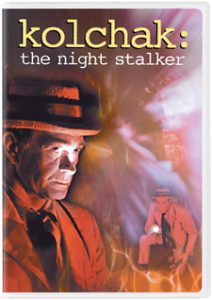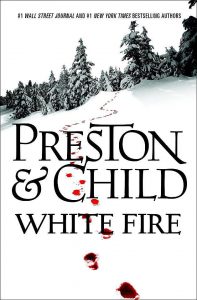In their 13th Pendergast novel, “White Fire” (November 2013, hardcover), Douglas Preston and Lincoln Child indulge their love of Sherlock Holmes lore while also delivering what fans have come to expect – a tense and dense mystery in an evocative location.
I’m not a big Holmes buff, even with the incredible resurgence in his popularity – I find the British “Sherlock” decent, but dislike the movie franchise and wasn’t hooked by “Elementary.” Yet I was totally engrossed by the portion of “White Fire” where the authors write an imagined long-lost Holmes novella by Arthur Conan Doyle titled “The Adventure of Aspern Hall,” and it almost makes me want to add some vintage Holmes novels to my reading stack. By the same token, I suspect Preston & Child will hook new fans who check out this novel purely for the Holmes connection.
In “White Fire,” the story goes that publishers scrapped Conan Doyle’s last story because it was too gruesome for Victorian-era sensibilities. Tracking the story behind the story with the help of a member of the Baker Street Irregulars (basically, the Holmes fan club), Pendergast learns that fellow Victorian author Oscar Wilde told the tale to Conan Doyle after hearing it from a Colorado miner in the audience at one of his American lecture-tour stops. Needing to put the tale to paper to exorcise his demons, Conan Doyle first wrote “The Hound of the Baskervilles,” but that only partly did the trick. “Aspern Hall” drops the major hints about what happened in those Colorado mines a century ago.
Setting “White Fire” at Christmastime, Preston & Child invent the remote mountain town of Roaring Fork, Colo., which features second homes for Hollywood types and a posh ski resort. But it has a decidedly blue-collar past as a silver-mining outpost. A string of arson murders cause a panic even as Pendergast’s 20-year-old charge Corrie Swanson (first introduced in “Still Life With Crows”) uses her forensics skills to examine the remains of those ancient miners who were supposedly killed and partially eaten by grizzly bears.
Corrie really comes into her own in this book as she tries to break free of Pendergast’s assistance of money and connections and write a winning thesis paper on her own to launch her law-enforcement career. She also has time for dating and making a new friend, former Air Force captain Stacy Bowdree, in Roaring Fork. Also, P&C show a nice cognizance of the financial reality of a college student as Corrie constantly wonders how much longer she can afford to stay in Roaring Fork (Hats off to Corrie for not simply pulling out a credit card, even if she does display unusual fiscal maturity). “White Fire” features roughly half Pendergast (whose status as a literary descendant of Holmes is evident here) and half Corrie. It’s sort of a handing-off of the detective baton (although by no means do I think we’ve seen the end of Pendergast).
One example of the authors’ mastery of tension comes in a mansion that Corrie is house-sitting while in Roaring Fork. It has a surveillance system where the letter “M” pops up on a screen if movement is detected on one of the cameras. You also can’t go wrong with abandoned mine tunnels, or a rotting old English house where Conan Doyle may have penned his lost story. Heck, even the story-within-a-story, “Aspern Hall,” features a creepy bog. (And I feel like the authors did a great job of mimicking Conan Doyle’s style, although Holmes fans will be better judges of that.)

(SPOILER ALERT through the rest of this post for those who haven’t read the book yet.)
“White Fire” follows in the P&C tradition where the villain turns out to be a feral or mutated human of some sort. Indeed, I very much got a “Relic” vibe when reading about the gruesome century-old murders. And it’s kind of funny to consider the parallels to Corrie’s first case, “Still Life With Crows,” which featured a feral cave-dwelling human.
I also have to credit the writers for really making me think Corrie died in the mine fire. Partially, they got away with it thanks to a cheap trick where we weren’t told that someone else was in the mine, although it does hold together pretty well in retrospect. Also, I think P&C’s killing off of main characters in the past (R.I.P., Smithback) made me think it was possible. In the end, though, Pendergast’s near-loss of Corrie brought them closer together – while also adding Stacy Bowdree into the mix — and I think it’s only going to strengthen future novels.

